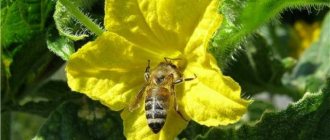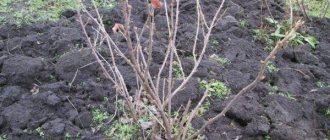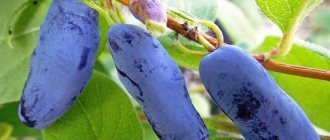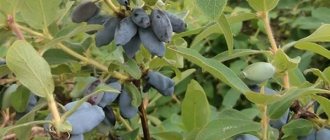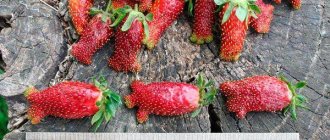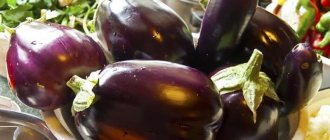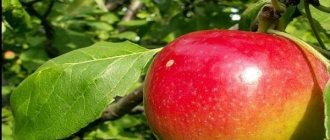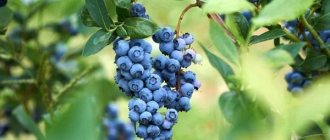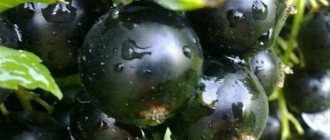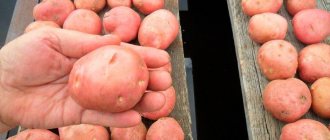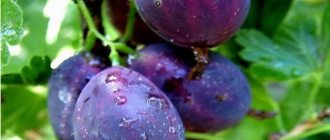Cucumber Ajax f1 is a good early-ripening hybrid, ideal for winter harvesting. You can eat it fresh, but many gardeners describe its taste as inexpressive. But in jars it acquires an appetizing crispness, taste and aroma.
| Landing location | Ripening time | Mode of application | Fruit length | Group | Fruit smoothness | Pollination method |
| Open ground | Early ripening (35-45 days) | Canning | Medium - from 10 to 15 cm | Hybrid | Highly lumpy | Bee pollinated |
Description of Ajax cucumbers
Probably, the most common vegetable on the planet is the cucumber, because you can cook a variety of dishes with it and not worry about the harm from such food. It is for this reason that many breeders are constantly trying to create varieties that do not require special attention from the farmer. The Ajax cucumber is a fairly common type of vegetable that has gained recognition all over the world.
Description of Ajax cucumbers
Peculiarities of pinching, other rules of agricultural technology
Basics of growing the variety:
- cucumber can be planted directly in the ground or seedlings can be prepared;
- There should be no more than 3 bushes per 1 m²;
- soil acidity – average;
- for plants it is necessary to stretch trellises or mesh;
- formation is carried out using pinching and pinching.
Advice. It is necessary to monitor the rate of soil warming. Cucumber germinates well and is also accepted if the soil has warmed up to 18 degrees.
Principles of stepsoning:
- The 3 lower stepsons are completely removed.
- The shoots at a height of up to 1 m are pinched after the 3rd leaf.
- The upper stepsons are at the level of 4–5 leaves.
- The main stem is at a level convenient for the farmer.
Sowing seeds for seedlings | Planting seedlings in a greenhouse/greenhouse | Planting OG seedlings | Stepsoning | Harvesting |
| 2-3 days of April | — | Mid May | According to the scheme | End of June |
| *dates are indicated for central Russia |
Characteristics of the variety
The Ajax f1 cucumber variety was bred in Holland. A few years later, more precisely in 2000, it was included in the National Register of the Russian Federation. He managed to win many hearts and take pride of place on the table in every home.
Its characteristics allow it to grow in any part of the country, regardless of climatic or weather conditions. Temperature changes are not scary for him, because cultivation is possible in a greenhouse. But it is best to use open ground.
Description of the plant
Due to the fact that the Ajax cucumber is not self-pollinating, it is recommended for growing in open areas, because in a greenhouse bees will not be able to pollinate the plants to increase yield.
The description and characteristics of the cucumber variety Ajax f1 indicate that this crop is indeterminate. The bushes are predominantly dense and powerful in structure. The weaving of the side shoots is quite high. The leaves are medium in size and have a bright, rich shade of green. At some points in time, with increasing light, Ajax cucumbers may lighten a little.
The plant grows quite tall, so experts recommend growing this variety with the help of special weaving, along which the bush will grow upward. If the bush is not tied up, the yield will decrease significantly, because in this case the plant will be damaged.
Description of the fruit
The fruits have a regular and even shape, resembling a cylinder. Small tubercles are formed on the surface, which are covered with a white tint. The color of the fruit is predominantly dark green. Small light areas can be observed at the tips.
The length of the Ajax f1 cucumber does not exceed 12 cm. But their weight is about 120 g. The flesh is quite dense and crispy. There are no voids inside, which makes the Ajax cucumber variety even more in demand in the world. There is no bitterness in the pulp. This type is quite universal and is used in all spheres of human life. It can not only be sold, but also consumed independently. It makes good salads or preserves.
Harvesting and storage
When harvesting greens, you should pay attention to the readiness of the fruit for harvesting - this is the state of maturity and size:
- 10 cm and more - use fresh;
- 3-4 cm - preparing pickles and gherkins;
- 8–10 cm—for canning;
- up to 18 cm - for pickling.
The best time to collect greens is early morning or evening. It is recommended to separate the fruits from the bush using a knife, scissors or pruning shears to avoid damage to the lashes, leaving part of the stalk on the bush. A selection of greens is done every 2-3 days, so as not to delay the growth of subsequent ovaries, and during the period of mass ripening - daily.
Freshly picked cucumbers should be placed in a cold room or covered with woven material to protect them from wind and sun to protect them from wilting.
Fresh cucumbers lose their taste the very next day, so it is advisable to eat or process them as soon as possible.
For short-term storage, a refrigerator or cellar is suitable, where the required temperature and humidity are provided (+6...+8°C, 80–90%). Under such conditions, cucumbers can be stored for up to three weeks.
The Ajax variety can be harvested from early summer until mid-autumn.
Caring for the Ajax F1 cucumber requires quite a lot of attention and labor costs. However, if all the requirements for growing this variety are met, the reward for your efforts will be a bountiful harvest, which, if sold, will bring significant income or replenish pantries with supplies for the winter.
Growing rules
The plant needs to be fed
The description of the Ajax cucumber variety states that they are not particularly picky about the soil. But, to obtain high yields, the soil should be fed a little. The ideal time to fertilize the soil is autumn. During the cold weather, they will be able to absorb the maximum amount of nutrients. For fertilizer, organic substances are used, which are applied immediately after loosening the soil. Manure, wood ash or humus are used as organic matter.
Planting is carried out only at the moment when the winter frosts have stopped and the soil has warmed up quite well, because the seeds have good germination only in warm soil. Seeds should only be purchased that are already in a special glaze, because they have already been treated with special substances that will accelerate growth and disinfect.
Disease and pest control
Pests of cucumbers are the following insects:
- thrips (sucks juice from leaves and stems);
- spider mite;
- field slugs;
- root-knot nematode;
- Gamma armyworm caterpillars.
Pest control involves using insecticides according to instructions.
Careful observation of plants will allow you to notice signs of diseases in time:
- small black-brown compactions - powdery mildew. Sprinkling with sulfur color (sulfur preparation) is required;
- brown dry spots and black dots on fruits and leaves are fungal diseases . Systemic fungicides are needed;
- slowing growth, falling leaves, dark root collar - root and stem rot. Systemic fungicides are used.
If it is necessary to treat plantings with chemicals, maximum fruit collection is carried out before treatment. Further sampling of cucumbers is carried out after a week.
To prevent diseases and pests, it is necessary to observe crop rotation, treat seeds, destroy plant residues, and monitor soil moisture.
Main characteristics of the variety
This is an early bee-pollinated hybrid. It is grown in open areas due to its pollination by bees; bees have difficult access to greenhouses. Often varieties are grown for sale due to long-term storage.
The plant has a powerful branched stem with medium-tuberous dark green leaves. Indeterminate with most flowers female. A stepson with one to three fruitful flowers grows from the axil. The plant is large, so they need to be grown vertically on a trellis. It is necessary to gradually shape the plant by removing excess stepsons.
Description of the cucumber: dark green on one side and bright light green with short yellow stripes on the other. The average size of a mature fruit is from 9 to 12 centimeters and weighs up to 100 grams. The green vegetable has a white edge, which disappears when the vegetable is washed. Ripe cucumbers have hard skin. The variety is high-yielding, up to 5 kilograms of crop are harvested from one bush.
The taste of the fresh fruit is mediocre, not bright, but without bitterness. Most often used for preparations for the winter.
The early harvest is formed smoothly; harvesting begins in June and continues until September. Resistant to temperature increases as well as minor fluctuations. Therefore, the variety has positive reviews from agronomists and gardeners.
Advantages and disadvantages
Among the positive characteristics of the Ajax F1 variety, experienced vegetable growers note:
- excellent consumer qualities;
- high productivity (8 kg per bush);
- universal purpose of fruits;
- a sufficient degree of resistance to major diseases (powdery mildew, cucumber mosaic, brown spot) and pests;
- early stages of ripening;
- friendly ripening of fruits;
- abundant fruiting;
- greens do not lose their freshness when transported over long distances;
- resistance to hot conditions.
Despite the whole list of advantages, the Ajax variety also has its weaknesses, which you need to know about in order to reap a rich harvest. Among them:
- dense peel of the fruit;
- the need to organize special supports for gartering lashes;
- mandatory pollination by insects.
Positive qualities of cucumbers
This type of cucumber has many advantages, including:
- yield 5 kilograms per bush;
- storage duration,
- resistance to infections and fungi,
- resistance to temperature changes,
- the fruit is universal in use,
- excellent transport features,
- ease of care.
Productivity
On average, the bushes produce up to 8 kilograms of harvest. Representatives of the Nunems company claim that the yield of this variety is as follows:
- 300 – 350 c/ha without trellises;
- 600 – 700 c/ha on fertile soil;
- 700 – 850 c/ha when combined with constant drip irrigation.
And if you pay attention to the reviews of gardeners, then, according to them, a bush yields at least 4.9 kilograms on standard chernozem soil, which is a very good indicator for cucumbers (the average is 3.2 kilograms). When grown without a garter (trellises), you can count on a yield of up to 6 kilograms, but it directly depends on the frequency of planting seeds
The formation of a bush is mandatory, since the formation of stepsons is included in this variety by default (a feature of the hybrid)
When grown without a garter (trellises), you can count on a yield of up to 6 kilograms, but it directly depends on the frequency of planting seeds. The formation of a bush is mandatory, since the formation of stepsons is included in this variety by default (a feature of the hybrid).
Description of the cucumber hybrid Ajax F1
The cucumber variety Ajax F1, included in the State Register of Breeding Achievements in 2000 and recommended for cultivation in all regions of Russia, was one of the first Dutch hybrids to enter our market.
Strictly speaking, it is incorrect to call a hybrid a variety, since varietal cucumbers can reproduce by seeds, but a hybrid cannot. Its genetic peculiarity is such that the best characteristics of the parent plants of the hybrid are passed on only to the first generation (F1), but from the seeds of the hybrid, if they still exist, either nothing will grow, or cucumbers with unpredictable characteristics will grow.
Large pimpled Ajax cucumbers grow dark green, with noticeable light stripes. In the green state, their size is 9-12 cm, the diameter of cucumbers is 3-4 cm. Up to 5 kg of cucumbers are collected from one square meter, the weight of one cucumber is about 100 g. Flowers (mostly female type) grow in the axils of the leaves 1-3 piece, require pollination, so Ajax is grown only in open ground.
Plant an Ajax cucumber
Many summer residents rightly believe that cucumbers grown in garden beds in the open air have a brighter and more pronounced “cucumber” taste. One can argue with this statement, but the Ajax hybrid, intended for cultivation in open ground, is indeed very tasty and aromatic.
It is not for nothing that the hybrid received such a name (football fans, as well as connoisseurs of ancient epics will confirm this), since it forms a powerful climbing plant. Ajax is part of the Indets cucumber group and produces a large number of large dark green leaves.
There are many inflorescences, mostly of the female type. The hybrid needs pollination by insects, so the best option for growing Ajax is open ridges.
The number of ovaries in each sinus varies from one to three. At the same time, the breeders made sure that this hybrid had a moderate formation of stepsons. This allows for minimal bush formation, which ensures excellent yields.
Ajax greens are smooth, similar to small cylinders up to 12 cm long. It is recommended to remove cucumbers up to 8-9 cm in size, since they are the ones most suitable for pickling. The skin is dense, covered with large tubercles with white pubescence. The pulp is juicy, tasty, no bitterness. As already mentioned, the Ajax hybrid is a cucumber that was created specifically for preparations and various preservations. Therefore, its excellent taste is best revealed in salting or marinades.
Many people are interested in the yield of cucumber; after all, it grows in the open air. With good care and compliance with the rules of agricultural technology, you can get up to 5 kg of delicious crispy greens from one “square”.
During the period of mass ripening of fruits, cucumbers must be collected regularly. Delays in harvesting reduce the overall yield.
Features of planting and caring for Ajax cucumbers
Although the Rosreestr of Plants recommends Ajax F1 for cultivation throughout Russia, practice has established that the best growing areas for it are steppes and forest-steppes, i.e., the southern regions of the country. It is not for nothing that many experts note that this hybrid is an excellent choice for farmers in Ukraine, with its steppes and black soils. In addition, the hybrid has sufficient heat resistance for these conditions.
Landing dates
In the southern regions it is usually planted in open ground at the beginning of May, but in central Russia you need to focus on the soil temperature, it should warm up to 18–20 0. Even high-quality seeds planted in cold soil will produce weak and unproductive plants.
Whether to grow cucumbers through seedlings or by sowing seeds in open ground, everyone decides for themselves. You just need to take into account that the root system of cucumbers is delicate and difficult to transplant from a seedling container into the ground. Using peat humus pots also does not always give a good result - it is difficult for roots to penetrate their walls. Often, cucumbers sown in open ground outstrip seedlings in their development. According to the author, it is better to organize a “warm bed” for cucumbers and plant seeds on it.
Preparing the soil for planting
Ajax does not like acidic soils; there is a high chance of developing black rot in cucumbers. Therefore, if necessary, deoxidation is carried out using dolomite flour, slaked lime, ash, or incorporation of green manure into the ground. This should be done not during planting, but in advance, for example, the previous fall.
Immediately before planting, organic matter (humus, compost, peat) is distributed over the soil - 1-2 buckets/m2 or mineral fertilizers (ammonium nitrate and potassium sulfate - 1 kg each, superphosphate 1.2 kg), also per square meter, and the bed is being dug up.
Sowing and organizing trellises
Seeds of cucumber hybrids undergo pre-sowing treatment, often including not only coating them with fungicides, but also mineral fertilizers, and their germination rate is close to 100%. Therefore, preliminary soaking and disinfection of seeds is not necessary.
The distance between the holes for seeds is about 20 cm, the planting depth is 2 cm. After planting, it is necessary to water the bed well (1.5–2 buckets per m2) and mulch it.
The main stem of the cucumber will need to be directed upward as it grows, so when planting, you need to take care of creating trellises. But how this will be done depends on your imagination and local conditions.
A variety of trellises for gartering Ajax's lashes - photo gallery
One way to garter cucumbers - video
Feeding
Regular feeding for Ajax is a necessary condition for obtaining maximum fruit yield. A week after the start of active harvesting, the plant is fed with nitrogen fertilizers - organic matter (manure solution), or nitrate (ammonium, calcium).
When active shoot formation begins, phosphorus-potassium fertilizers are applied to accelerate the generative growth of shoots.
If it is possible to organize drip irrigation, then it is convenient to apply fertilizers along with watering.
Formation
To prevent the plant from thickening and get a good harvest, it is necessary to pinch the side shoots of the cucumber. Its scheme is simple.
- Two or three of the lowest stepsons are completely removed.
- The remaining stepsons at a height of up to 1 meter are pinched after 2–3 leaves have formed on them.
- Above 1 meter, the same operation is carried out after 4–5 leaves appear on the side shoots.
- The main stem is pinched at a convenient height.
The central stem and side shoots are periodically carefully tied to the trellis.
Growing cucumbers - video
Watering
It is known that cucumber contains about 95% water and the plant must be watered regularly. Watering at intervals of 3 days in normal weather should be carried out starting from the appearance of the first flowers on the bushes. The watering rate is 7–10 liters of warm water per bush. It is convenient to water the cucumbers in the evening with water heated during the day.
Harvesting
If the weather is favorable, the first cucumbers will appear in 42–45 days, this is very early, and they can be collected for almost 3 months. The main wave of harvesting will occur in the period starting from the 60th day after germination and will last a month, after which the intensity of the growth of cucumbers decreases.
Landing
Ajax cucumber seeds are sold after treatment with stimulants and antiseptics. You can distinguish such seed from untreated seed by the presence of an orange, green or blue shell, like a dragee. If the bag does not say anything about treatments, then you can soak the grains for an hour in a weak solution of potassium permanganate to protect against diseases, and also treat them with a solution of Epin or Zircon, prepared according to the instructions.
It is permissible to plant the crop immediately in a permanent place or to pre-grow seedlings. The seedling method is recommended for regions with short summers.
For the substrate, mix ordinary soil, humus and sawdust in equal parts. Then the composition is spilled with a hot solution of potassium permanganate and laid out in containers for seedlings. Seedlings should be grown in 300-500 ml pots, preferably peat ones, so that the roots of the cucumbers are not damaged during transplantation.
Fertilizers are not required, but you can add a little potassium sulfate, superphosphate or urea to the soil. Plant one grain at a time to a depth of about 2 cm, then place the pots on a brightly lit windowsill.
Seedlings need good lighting from 8 to 18 hours a day. If daylight hours are short, special lamps are used.
After three weeks, you can plant the bushes in a permanent place. By this time they should have 4-6 leaves.
Care
- Basic rules for caring for plants of the Ajax variety (F1):
- Frequent watering in the evening with warm, settled water;
- Regular loosening of the soil in the area with cucumbers;
- Weeding, removal of tops;
- Feeding bushes with organic matter and liquid mineral fertilizers.
It is necessary to water the plants in compliance with certain rules: the soil should not dry out and moisture should not stagnate. Excess water will lead to rotting of the root system of the bushes.
To increase productivity during the growing season, cucumbers need to be fed no more than 2 times a month. Organic fertilizers and nutritional mineral complexes are ideal as fertilizers.
